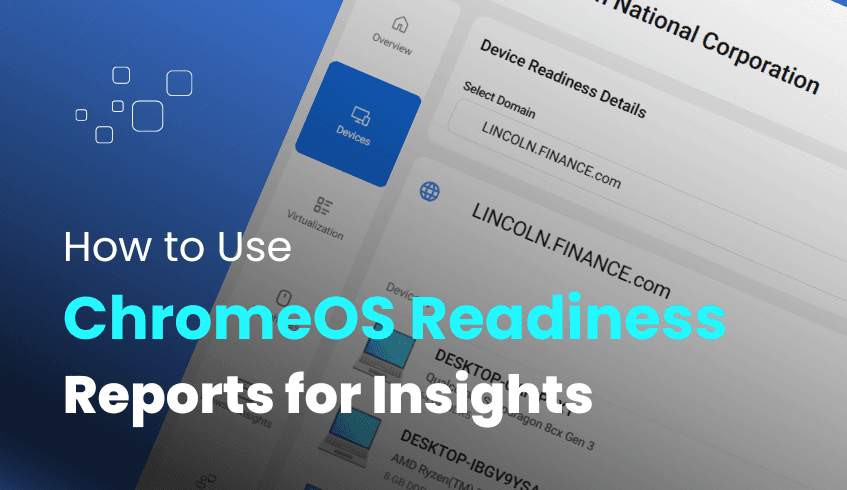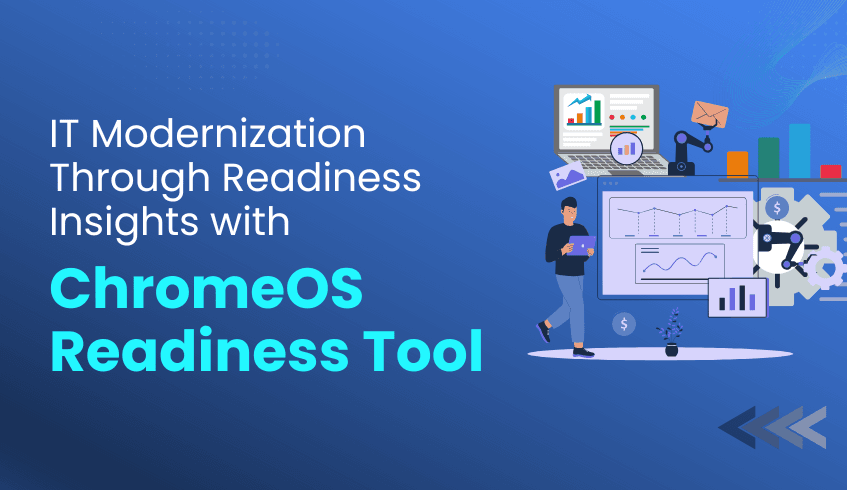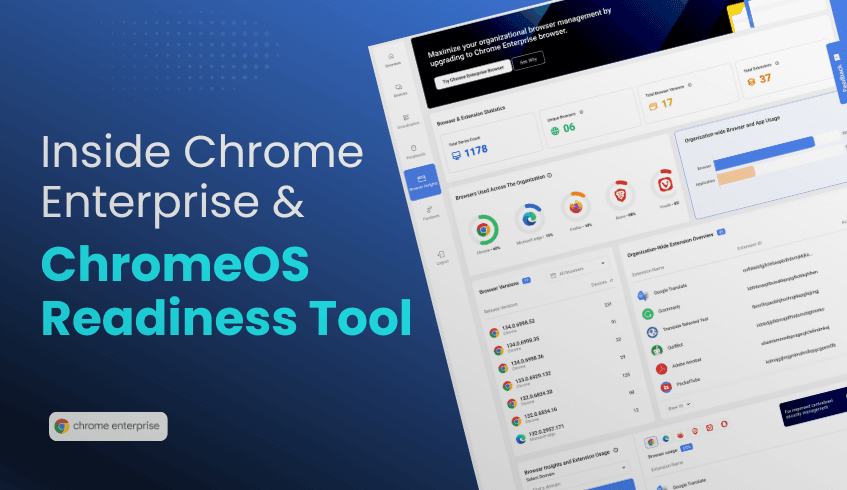
Beyond the Dashboard: Leveraging ChromeOS Readiness Tool Reports for Deeper Insights
Migrating to ChromeOS is a strategic shift, one that requires more than a simple compatibility check. While the ChromeOS Readiness Tool offers an intuitive dashboard for a high-level overview, its true value lies in the depth and detail of its reporting capabilities.
These robust insights help IT teams anticipate obstacles, streamline planning, and execute more precise, confident transitions to ChromeOS.
Why Go Beyond the Dashboard?
The dashboard gives you a snapshot. But for large scale migrations, especially across complex environments, you need granular, actionable insights.
The ChromeOS Readiness Tool delivers:
Detailed application and device assessments
Reports generated in prior rounds when the tool was configured .
Exportable reports for advanced data exploration
Browser and peripheral device usage breakdowns
Virtualization recommendations for Blocked or Ready with verification applications.
Clear Classification for Smarter Planning
Applications and devices are classified into readiness categories, making it easy to prioritize migration efforts:
Application Readiness
ChromeOS-Ready: Operates seamlessly on ChromeOS.
Possibly Ready: May need slight configuration or testing.
Blockers: Not compatible, may require alternatives or virtualization.
Unknown: Unclassified application in the tool’s database.
Device Readiness
Ready to Switch: Green light for migration.
Ready with Verification: Functional but needs further testing.
Blocked from switching: Incompatible due to application usage dependencies.
This classification system gives IT teams a roadmap, what can move today, what needs review, and what requires rethinking.
Admin Level Reports: What’s Inside
When collection completes, admins gain access to a powerful report view on their own device. This includes:
A summary count of applications by readiness status
Pie charts showing overall device readiness percentages
A domain level device listing with individual readiness states
Detailed app summaries per device, including foreground/background usage
Access to historical reports for trend analysis and audit trails
Report Export: For Deep Dive Analysis
The tool allows you to export raw data in Excel format/PDF, perfect for organizations looking to run their own reporting workflows or import into Business Intelligent tools like Looker, Tableau, or PowerBI.
Export options include:
Device Readiness Report: Detailed metrics on each device’s status, usage, and ChromeOS compatibility
Peripheral Readiness Report: Compatibility data for printers, scanners, and other peripherals
Executive Summary Report: A concise PDF designed specifically for decision-makers. It provides a high-level overview of your organization's readiness for ChromeOS, highlighting key readiness metrics and insights
With these exports, teams can:
Build custom dashboards
Identify migration risks by department or region
Tailor phase rollout plans
Perform cost-benefit analyses
Virtualization Planning: Streamlined Recommendations
For applications flagged as Possibly Ready or Blockers, the dashboard now includes a Virtualization section with Cameyo recommendations.
Features include:
Application-level virtualization status
Usage-based filtering (High/Low)
Cameyo compatibility insights
This makes it easier for teams to proactively virtualize legacy apps that can’t run natively on ChromeOS, ensuring productivity isn’t compromised.
Browser Insights: Web Compatibility at a Glance
Migrating to ChromeOS means shifting toward browser-based workflows. The Browser Insights feature gives you full visibility into your current web environment:
Browser usage: Chrome, Edge, Firefox, Opera, Vivaldi, Brave
Version distribution: Track outdated or inconsistent browser versions
Extension analysis: See which extensions are widely used and which may pose risks
Benefits include:
Improved browser standardization
Better extension governance
Enhanced security posture across teams
End-to-End Security by Design
Security remains a cornerstone of the tool’s architecture.
Data never leaves your infrastructure without permission
To access the dashboard, admins must upload the private key generated during deployment. This means:
Only the deploying user can access the collected data with the use of the Private key
Data remains confidential and tamper proof
Network folder data is not accessible to employees or Client device users
Turn Insights into Action
The ChromeOS Readiness Tool is more than a diagnostic; it's a strategic planning platform. By leveraging its full suite of reporting features, your team can:
Minimize surprises
Maximize hardware ROI
Identify high-impact blockers early
Confidently guide your migration roadmap
Ready to take the next step? Dive into your data, export what you need, and unlock a smarter, smoother path to ChromeOS adoption.




